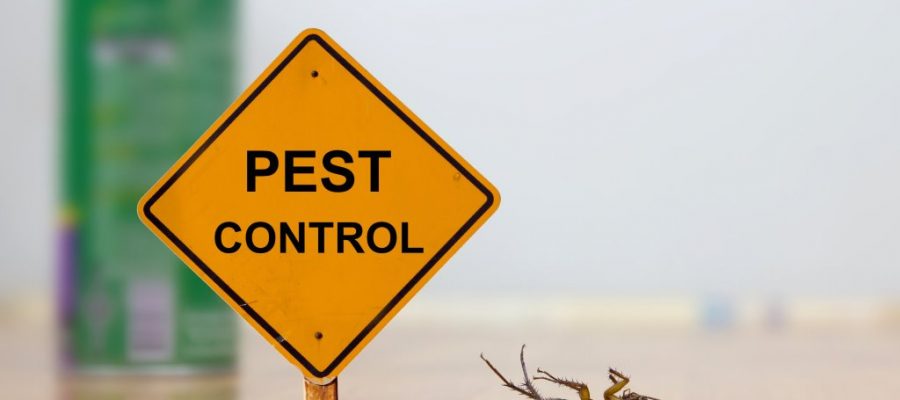Reliable Pest Control to eliminate insects and rodents quickly.
Eco-Friendly Pest Control Approaches for Taking Care Of Wildlife in Urban Locations
Urban locations often discover themselves at the crossway of human task and wild animals, leading to one-of-a-kind obstacles in parasite management. Environmentally friendly techniques stress lasting conjunction, employing strategies such as environment modification and all-natural repellents to reduce human-wildlife problems. These techniques not just protect the atmosphere yet also improve community interaction in wild animals administration. As metropolitan populations continue to grow, recognizing the characteristics of wild animals interactions ends up being increasingly crucial. What ingenious techniques can be executed to make certain both environmental equilibrium and metropolitan safety and security? Exploring this inquiry discloses an engaging landscape of possible remedies.
Understanding Urban Wildlife Characteristics
Understanding Urban Wildlife Characteristics is essential for developing effective and environment-friendly bug control techniques. Urban locations are progressively becoming environments for different wildlife varieties, driven by aspects such as habitat fragmentation, food accessibility, and human infringement. Acknowledging these dynamics enables for a nuanced method to pest monitoring that straightens with ecological concepts.
Urban wildlife commonly includes species such as raccoons, squirrels, and birds, which adapt to city environments, discovering particular niches in green spaces, parks, and even property areas. Their presence can result in conflicts with people, especially when they make use of personnels for food and sanctuary. Comprehending the actions and environmental functions of these types informs strategies that decrease unfavorable interactions while promoting biodiversity.
Furthermore, recognizing the interdependencies within metropolitan communities aids in recognizing vital areas for environment preservation and repair. This expertise adds to the advancement of integrated bug monitoring (IPM) techniques that think about the environmental equilibrium, therefore decreasing dependence on harmful chemicals. By promoting coexistence between human beings and urban wildlife, cities can create much healthier settings that profit both residents and regional ecosystems, leading the way for sustainable city living.
Natural Repellents and Deterrents
Natural repellents and deterrents offer a lasting alternative to traditional bug control methods by using the power of nature to keep unwanted varieties at bay. These eco-friendly services typically make use of plant-based components, crucial oils, and other normally occurring materials that deter parasites without hurting the atmosphere.
One reliable natural repellent is peppermint oil, which is known to repel rats and pests. Its strong scent is undesirable to several bugs, making it a prominent choice for urban setups. In a similar way, vinegar and citrus peels can act as deterrents, as their solid odors are commonly uninviting to numerous wild animals.
Additionally, diatomaceous planet is an all-natural powder that can be spread in areas prone to bug task, properly drying out and deterring insects without positioning dangers to non-target types. Garlic sprays and neem oil are identified for their ability to repel a broad range of pests, consisting of both insects and bigger wildlife.
Executing these all-natural repellents not only minimizes dependence on chemical pesticides yet additionally promotes a much healthier metropolitan ecological community, promoting a much more balanced conjunction in between people and wild animals. By utilizing these methods, metropolitan locations can properly take care of pest populaces while lessening ecological influence.
Habitat Alteration Methods
Efficient environment alteration methods play a vital function in sustainable pest monitoring by changing the environment to make it less for pest infestations. By comprehending the environmental characteristics of city areas, homeowner can implement calculated adjustments that discourage pests while promoting biodiversity.
(Equine Pest Protection)One primary strategy involves keeping correct cleanliness. This consists of regular waste elimination, securing garbage can, and getting rid of standing water to lower breeding sites for pests and rodents. Furthermore, landscaping practices such as choosing indigenous plants can improve environmental balance, supplying habitats for valuable microorganisms while reducing resources for bugs.
Another essential approach is to seal entry factors in structures. Examining and repairing fractures in structures, walls, and windows can significantly reduce insect access. Additionally, creating physical barriers, such as fencings or plant buffers, can prevent wildlife activity into human-inhabited areas.
Integrated Parasite Management Practices
Structure upon habitat modification techniques, integrated insect administration (IPM) techniques use an all natural method to regulating parasite populations while minimizing environmental impact. IPM incorporates numerous approaches, consisting of biological, social, mechanical, and chemical controls, to accomplish efficient pest management.
Biological this website control includes the intro of all-natural predators or parasites to decrease insect populations. Social methods, such as plant rotation and cleanliness, interrupt pest life process and diminish their environments - Pest Control. Mechanical controls, like traps and barriers, provide instant remedy for pest stress without chemical intervention
Chemical controls are used as a last hotel, concentrating on targeted applications that restrict harm to non-target varieties and the setting. The selection of ecologically friendly pesticides, when needed, is indispensable to the IPM framework. In addition, keeping an eye on bug populaces and evaluating possible damages assists educate decision-making, guaranteeing that treatments are prompt and effective.
Area Participation and Education

(Equine Pest Protection)Workshops and informational sessions can equip residents with knowledge concerning indigenous species, environment preservation, and efficient safe bug administration methods. Collaboration with schools, neighborhood organizations, and government agencies additionally enhances instructional outreach, making certain that crucial information reaches varied target markets.
In addition, community-led efforts, such as community clean-up days and environment reconstruction tasks, not just advertise biodiversity but also strengthen community ties. Pest Control. By motivating citizens to share their experiences and monitorings, neighborhoods can create targeted strategies that deal with certain neighborhood parasite concerns
Incorporating comments from citizens right into pest management prepares makes it possible for a more responsive and flexible strategy to wildlife challenges. Ultimately, notified and involved communities are vital to achieving lasting success in green bug control, resulting in much healthier metropolitan environments that appreciate both human and ecological requirements.

Final Thought
In verdict, environmentally friendly parasite control approaches offer sustainable solutions for taking care of metropolitan wildlife. By focusing on habitat adjustment, using natural repellents, and executing incorporated parasite monitoring techniques, areas can promote an unified conjunction with neighborhood animals.